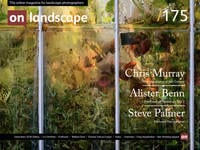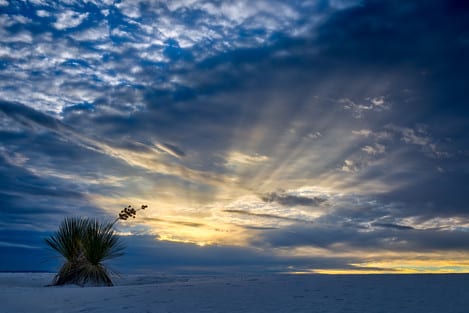Connecting with the essence of the place

Craig Varjabedian
Craig Varjabedian is an award-winning photographer who explores the back roads of the American West, making pictures of the unique and quintessential. He shares awe-inspiring stories of the land and the people who live on it; one photograph at a time.

Charlotte Parkin
Head of Marketing & Sub Editor for On Landscape. Dabble in digital photography, open water swimmer, cooking buff & yogi.
Back in the summer, Craig contacted us to tell us about his new book 'Into the Great White Sands' and the more I read about the White Sands National Monument, the more I wanted to know about the vast 224 square miles that the park covers and the six distinct ecological units it encompasses. We caught up with Craig to hear more about this special place, the largest gypsum dune field on the planet, and his sense of connection with it.
Tell us why you love landscape photography and your route into it.
To answer that question, I have to go way back to my experiences as a small child growing up in Canada. I was always drawn to the outdoors, being out in nature and observing and watching whatever I could find in my backyard; leaves, insects, birds, small animals. I was a focused, contemplative child who enjoyed spending time alone and getting lost in the workings of the natural world, trying to figure out why i seemed to work the way it did. As an adult, I continue to find great joy being out in nature, almost an obsession, and working as a photographer has given me the opportunity to constantly be learning something from my experiences in the natural world. For me it’s more than just about making pretty pictures, that’s nice certainly, but it’s more about having the opportunity to observe, to be a witness to the miraculousness of it all. While out photographing in the landscape, I have learned that I have to turn off the internal dialogue, to be quiet, still and patient so that the veil might be pierced and I am given a glimpse into some magic moment. And if I’m lucky enough for the veil to stay open long enough, I am given the gift of a beautiful photograph. Sharing these moments through my photographs brings me great joy.
A chance encounter at a gallery with a well-known photographer at the age of 14 ignited my imagination to the possibilities of becoming an artist and pursuing photography as a craft. This led me to the formal study of photography with Phil Davis at the University of Michigan. Phil was a stickler for craft and believed that with a thorough grounding in technique one could then begin the challenging process of mining the notions of what makes a good photograph. I am grateful for the discipline that Phil Davis taught me. A few years later, thinking that I wanted to follow an academic career track, I enrolled at the Rochester Institute of Technology where I received my Master of Fine Arts degree in photography.
As a photographer, I have been incredibly fortunate to receive so much support for my work. Photography is a highly competitive field and it is difficult to get noticed, much less supported. I am tremendously grateful and a little overwhelmed by the people who purchase my original photographs, acquire copies of my books or attend photography workshops that I teach.
My work has covered a wide range of genres and has received national recognition, such as a television Emmy Award in 1991 for the PBS Documentary "En Divina Luz: The Penitente Moradas of New Mexico". I have also received two successive National Endowment for the Arts grants for my work. I tend to work on photographic projects somewhat thematically, projects that seem to grow and take several years to wrestle with and eventually complete. These often evolve into a book, then a travelling exhibition of that work. My latest body of work, "Into the Great White Sands", is my twelfth book published by the University of New Mexico Press and photographs from this are currently being presented at The Museum of the Southwest in Midland, Texas, where the exhibition debuted. The exhibition will continue to travel around the United States and possibly go on to Europe.


